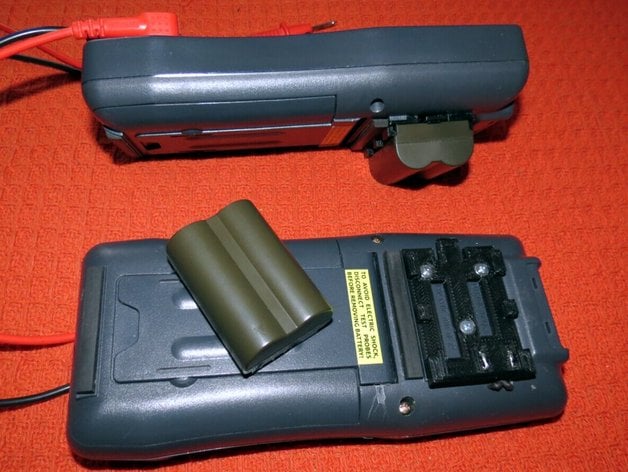
Click Frame for BP-511 Type Camera Batteries
thingiverse
The BP-511 type camera batteries are incredibly common, used by a wide range of Canon photo and film cameras like the EOS, PowerShot G, and MV series. The BP-511A is a 2-cell Li-Ion battery with a nominal voltage of 7.4V and an impressive usable voltage range between 8.4V at max charge and 6V when empty. Besides the two Li-Ion cells, this battery contains a small PCB that safeguards the cells from overcharging, deep discharging, and short circuits. With a capacity of 1390mAh, the BP-511A is impressive, but many compatible variants with capacities ranging from 800mAh to 3500mAh are also available. Many affordable third-party batteries and chargers are sold in addition to the original products from Canon. Given their high availability, easy integration, and robust protection circuitry, these batteries make an ideal choice for DIY projects. The 8.4V full charge voltage and flat Li-Ion discharge curve enable the use of these batteries as a substitute for conventional 9V batteries. However, to integrate them into your project, it is essential to connect the battery to your electronics using a compatible adapter. This project provides an easily integrable battery holder in the form of an adapter frame, enabling users to incorporate BP-511 type batteries seamlessly into their projects. The adapter frame has sliding rails and a "clip click" mechanism that hold the battery securely in place. The provided SCAD file is fully parameterized and commented, and two STL versions are available: one with a closed back for use as a cover and another with openings and screw holes for mounting on a carrier. The project was motivated by my own need to replace the rechargeable 9V batteries that power my digital multimeters. These batteries just didn't last long enough, especially the ones from the rechargeable set. After checking out some old BP-511 and BP508 batteries I had lying around, I found that they already contained the necessary protection circuitry for safe use in DIY projects. Their voltage range was an ideal match for replacing the 9V PP3s. Even batteries no longer suitable for cameras due to reduced capacity can still be useful in other contexts. Print Settings Printer Brand: RepRap Printer: DIY box-frame Prusa i3 Rafts: No Supports: No Notes: I printed these objects using my DIY box-frame Prusa i3 with 0.40mm nozzle and 0.25mm layer height, on a clear mirror without Kapton tape. The printing process was conducted using ABS, the preferred material due to its strength and flexibility necessary for the slide-in rails and clip-click mechanism. Post-Printing Adding contact wires: Use not-too-thin stranded wire with leads long enough to insert into the wire tunnel and strip 5cm of insulation at one end. Then, thread these stripped ends through each contact hole as depicted in the sequence. Solder a "knod" onto each wire, pushing them deep into the grooves, and secure any bare wires with duct tape or fill the grooves with ABS/Acetone slush. Finally, tin the exposed contacts on the battery frame to ensure good electrical contact.
With this file you will be able to print Click Frame for BP-511 Type Camera Batteries with your 3D printer. Click on the button and save the file on your computer to work, edit or customize your design. You can also find more 3D designs for printers on Click Frame for BP-511 Type Camera Batteries.
